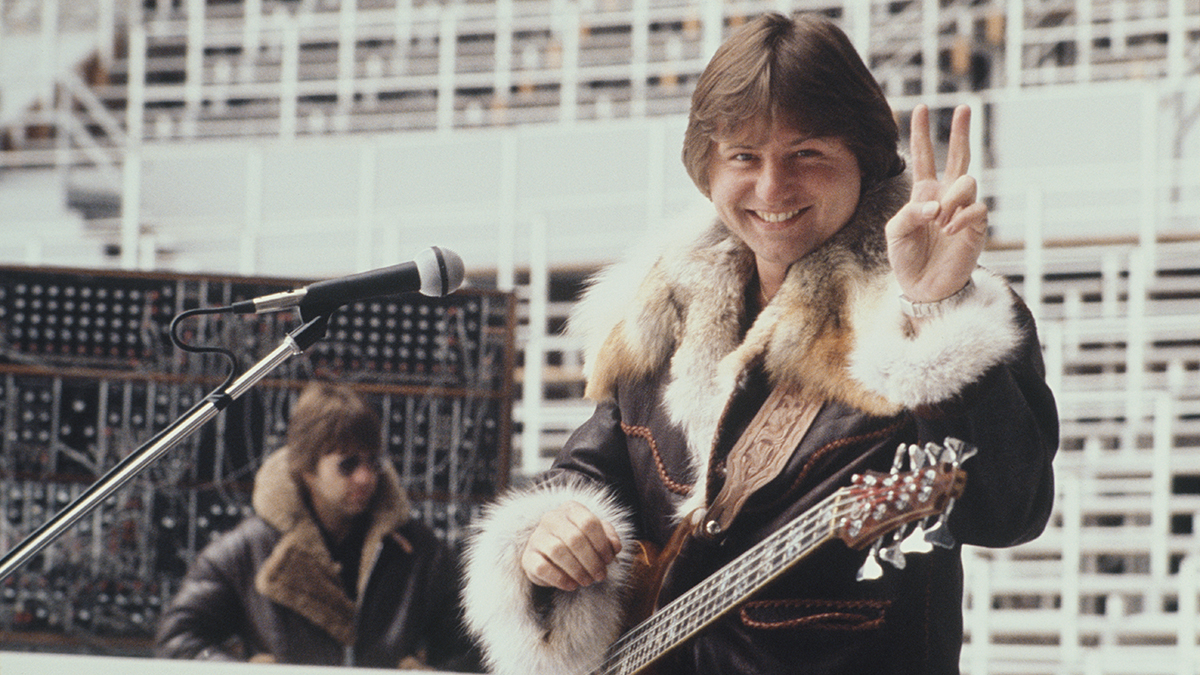“There are so many emulators of Steve Vai, Joe Satriani and Eddie Van Halen, but no one has been able to play like Frank Gambale”: Matteo Mancuso names 10 guitarists who shaped his sound
From Jimi to Django, these are the ingredients behind Matteo Mancuso’s stunning guitar technique

On his latest track Paul Position, Italian fusion mastermind Matteo Mancuso reminds us all why he stands as one of the most extraordinary talents to emerge in recent years. Mixing elements of country swing and heavy blues into a stunning four-minute display of genre-crossing brilliance, it’s the kind of song that will appeal to just about anyone who listens to instrumental guitar music.
None of that should come as a surprise, however, given the dazzling musicality and technical brilliance on display on last year’s debut album The Journey. What might be a surprise, however, is Mancuso’s usage of a six-string baritone for rhythmic ideas that dance into the realm of tech metal.
His instrument of choice was made by Italian company Bacci, rather than the Yamaha models usually seen in his hands. As it turns out, the idea had been bubbling away in his mind for quite some time.
“I was looking for a guitar that could cover the lower range for rhythms and riffs, like a seven-string,” the 27-year-old prodigy tells Guitar World. “But seven-strings feel really strange. For me they’re uncomfortable to play, and I don’t find them to be aesthetically pleasing – they just don’t look sexy!”
That thinking led him to longer scale length six-strings. Given that Yamaha aren’t currently in the business of baritone guitars since their Drop 6 models were discontinued, there was no conflict of interest in being seen with instruments made by other brands.
Tuscany-based luthier Bruno Bacci, meanwhile, specializes in high-end baritones which have ended up being wielded by modern funk masters like Mark Lettieri and Cory Wong. Clearly, it was meant to be.
“To my ears, a sixth string tuned down to B sounds better than the low B of a seven-string,” says Mancuso.
All the latest guitar news, interviews, lessons, reviews, deals and more, direct to your inbox!
“The chords sound more even; I just prefer what I hear. They’re also easier to play! Basically baritones are regular guitars tuned one fourth down. For chordal work, it’s much easier than having to deal with an extra string. That was the start for me. Some people have been asking if I’ve left Yamaha, but that’s not true. Bacci will be just for baritones. My regular guitars will always be Yamaha.”
The track title Paul Position came to him after its completion. Parts of the solo section reminded him of certain Paul Gilbert licks – so why not acknowledge the influence head-on?
“Bacci asked me to record a song using only baritones,” he says. “It started around NAMM 2023. I had to do a demo, but I didn’t know what to play. I came up with some ideas that used open strings, so you could hear the bass frequencies and low end. I was also experimenting with a lot of country licks.
“I composed the song in April last year and decided to keep it separate from my first album. When I listened back, I realized the solo was inspired by Paul Gilbert – which is why I referenced him, swapping ‘Pole’ for ‘Paul’ as a little joke.”
As well as nods to the Racer X and Mr. Big legend, moments of the track are surprisingly reminiscent of Tosin Abasi’s work in progressive metal trio Animals As Leaders – perhaps not so much in terms of tone, but certainly in the thumb-led rhythmic chug of a detuned lower string, resulting in some of the most metallic flavors the Italian has given us to date.
There’s always been that side to him, he reasons, citing players like Yngwie Malmsteen and Randy Rhoads among his more aggressive influences when he’s looking to unleash the fury. Other lines are reminiscent of modern blues giant Joe Bonamassa – who famously championed Mancuso early on, and even invited him up on stage in Berlin on his last European tour.
Keen-eyed viewers of fan-filmed clips noted Bonamassa seemed to be laughingly shrugging at the notion of trying to keep up with Mancuso. In many ways, it felt like a passing of the torch. “Joe has definitely influenced me a lot, especially with his pentatonic stuff,” the rising star confirms.
“I was really nervous before taking the stage in front of 5,000 people. It felt like a challenge. Joe was great at making me comfortable – he’s such a nice guy. We did a soundcheck earlier in the day and he told me to just have fun and not to worry about anything else.
“That was so helpful because it set up the mood. I was nervous until I walked out – and then I suddenly felt really happy. Everyone was smiling and the whole band were supporting me. It was an incredible experience; easily one of my favorites from this year so far.”
Here Mancuso tells Guitar World about the 10 guitarists who shaped his sound – a list which reflects why he’s such a rounded player, well-poised for a long career of guitar stardom.
1. Jimi Hendrix
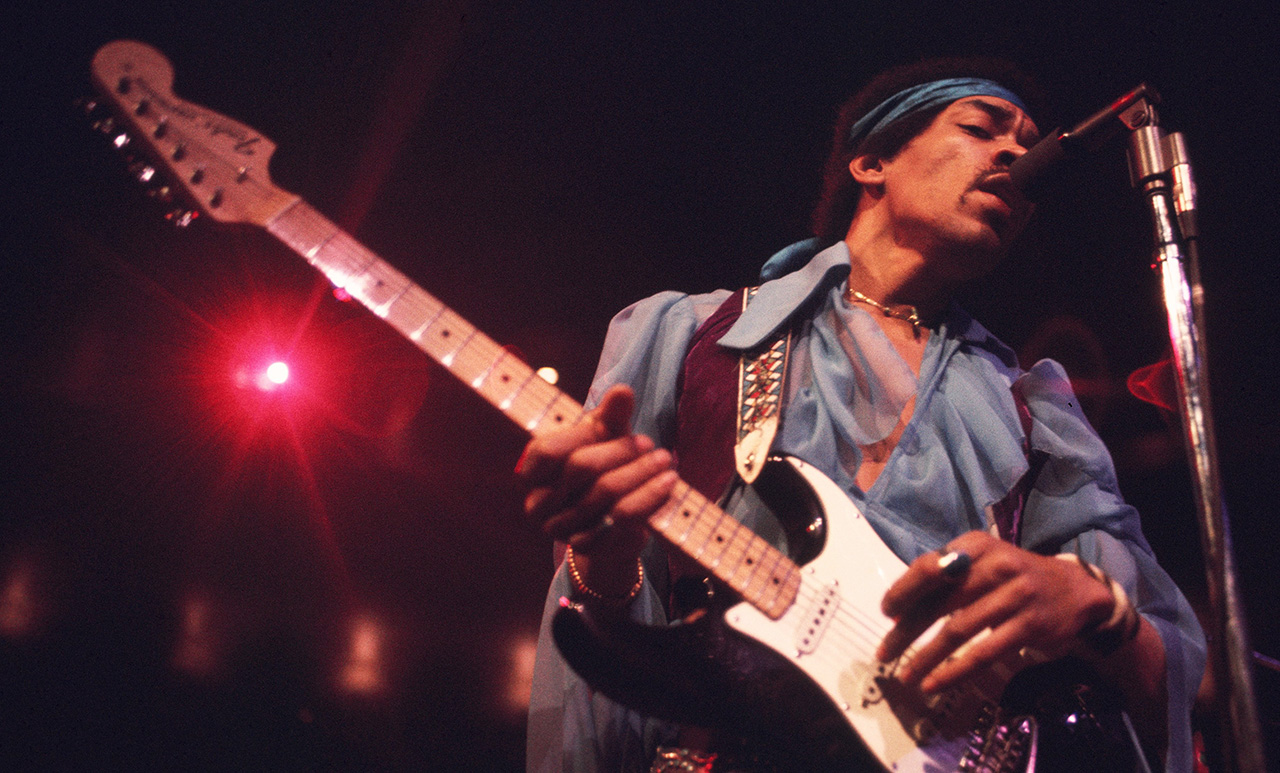
“I know people who listen to me might think I’m far away from the Hendrix style, but he was my first big influence. Like many people, the first songs I learned were Hendrix songs like Purple Haze. And one of the first chords I learned was the Hendrix chord... that was its official name for me!
“Hey Joe taught me the basic chord shapes like C, G and A Minor. Other tunes like Voodoo Child (Slight Return) and Little Wing were a great starting point for learning my first pentatonic solos, as well as the importance of bending and wide vibrato.
I learned about not sticking to boxes and moving horizontally rather than vertically. It was a major discovery
“Many people think I started out playing classical because I use fingerstyle, but actually it was electric, and Hendrix was the backbone of all my technique.
“In terms of vocabulary and technique, it was mainly pentatonic, but there was some Dorian stuff I learned from Hendrix, especially going across one string. That’s how I learned about not sticking to boxes and moving horizontally rather than vertically. It was a major discovery for me as a 10-year-old.”
2. Angus Young

“During my first years of playing I was all about Jimi and Angus. One of the first songs that blew my mind was Whole Lotta Rosie. There’s a famous live version where Angus plays an extended solo and he’s really ripping on that SG. I remember thinking, ‘I need an SG right now!’
“Angus has small hands like me, but he still has a lot of power when it comes to bending and vibrato. As a kid, I thought you needed big hands for that, but Angus proved you didn’t.
“He had a very clean, natural and dynamic sound – just an SG going into a loud Marshall. Sometimes that’s not the easiest tone to work with, because it can be harder to play and people can hear all the imperfections. It’s the total opposite to the metal compressed thing, which is very forgiving. That’s why I love Angus’ tone. It’s so raw and you can hear he’s having a good time!”
3. Eddie Van Halen
“Eddie was my introduction to the late ‘70s and ‘80s shred movement. The first Van Halen record is very special – it has Eruption, as well as Ice Cream Man, which is one of my favorite tracks by them. I remember watching his most famous live versions of Eruption on YouTube. I had no idea you could do things like that with a guitar!
“Seeing that led to me trying to play with a lot of gain. I found it really difficult because you need a lot of control in your right hand. Being a fingerstyle player, controlling all that distortion was a hard thing to master.
“Beyond what Eruption did for guitar solos, there was the Van Halen remake of You Really Got Me, reinterpreting older music for a new generation. I loved the look and sound of the Frankenstrat. Eddie always looked so cool on stage.”
4. Eric Johnson
“Eric was and still is one of my biggest influences. I first heard him through a live version of Cliffs Of Dover from 1988. It blew my mind immediately; and to this day I would say it’s one of the greatest live recordings ever captured, just because of how clean he plays those lines and the sound of his vibrato.
“The next tune I learned by him was Zap, from the same album [Live In Austin, TX]. I became completely obsessed with Eric. I wanted the same sound, the same feel, the same everything! He was doing stuff that I didn’t really hear from the other players.
In order to improvise like him, I started to actually imagine I was him! That exercise helped a lot
“I learned a lot from his music, such as the spread triads concept – which is actually very simple. You take whatever triad it is, let’s say a C Major one, and instead of playing the major third in the same octave, you play it in the next one. That’s why it’s called a spread triad! That was a big discovery and I still use that concept in my own playing.
“Then there’s all the pentatonic cascading stuff. He could make his guitar sound like a violin because of how clean he played. In order to improvise like him, I started to actually imagine I was him! That exercise helped a lot, actually.”
5. Scott Henderson
“Scott was probably one of the first fusion guys I heard. One of the first songs I heard was Dolemite. Immediately I could tell he was a genius player, even if there’s no crazy technique behind his music. His solos are – well, I wouldn’t say easy – but not technically incredible. But what he plays is always musical; he does the right thing for the song in every situation.
“His touch is amazing, especially when you look at his whammy bar control. He’s one of the few players that can play through the changes in a really interesting way, stringing through different scales and arpeggios. He can deliver a lot of information; but at the same time he’s rocking out with a bluesy sound that’s like Stevie Ray Vaughan on steroids.
“Because of that, I think he brings the best of both worlds. He has the aggression and power of rock players, but the sophistication and colors of jazz. I knew I wanted to be that kind of guitarist: someone who could rock out but also have a clear understanding of scales and what works where.
“I’ve seen Scott live twice. The first, at the Blue Note in Milan, was one of the best concerts I’ve ever seen. After hearing Dolemite, I started listening to his work in the Chick Corea band. There’s one solo I transcribed from a song called King Cockroach; even after hearing it 100 times, it still gives me the chills. Then there’s his work with Tribal Tech, which is more fusion-sounding. I really like the song Face First from those recordings.”
6. Frank Gambale
“Frank is another player who stunned me the moment I heard him. By this point, I’d reached a certain technical level, so that stuff was less important to me and came second. What really got me hooked was his endless exchange of ideas.
“His solos are very original. I’ve never heard anyone play like Frank, to be honest. There are so many emulators of Steve Vai, Joe Satriani and Eddie Van Halen, but no one has been able to play like Frank. He’s such an innovator – and not because of the sweep picking, because that’s what people tend to focus on.
He has a lot of sophistication and knowledge, but he can also rock and play hard
“Of course it’s an important aspect, but it’s his vocabulary that I find truly unique. It’s all the quartal stuff and outside ideas. I also like his compositions, because he’s really influenced by one of my favorite bands, Steely Dan. You can hear it in how he searches for all those interesting harmonies. Like Scott Henderson, he has a lot of sophistication and knowledge, but he can also rock and play hard.
“There’s one album that I listen to a lot – Thunder From Down Under – which has him riding a giant kangaroo on the cover. The song Leave Ozone Alone is one of my favorites.”
7. Allan Holdsworth
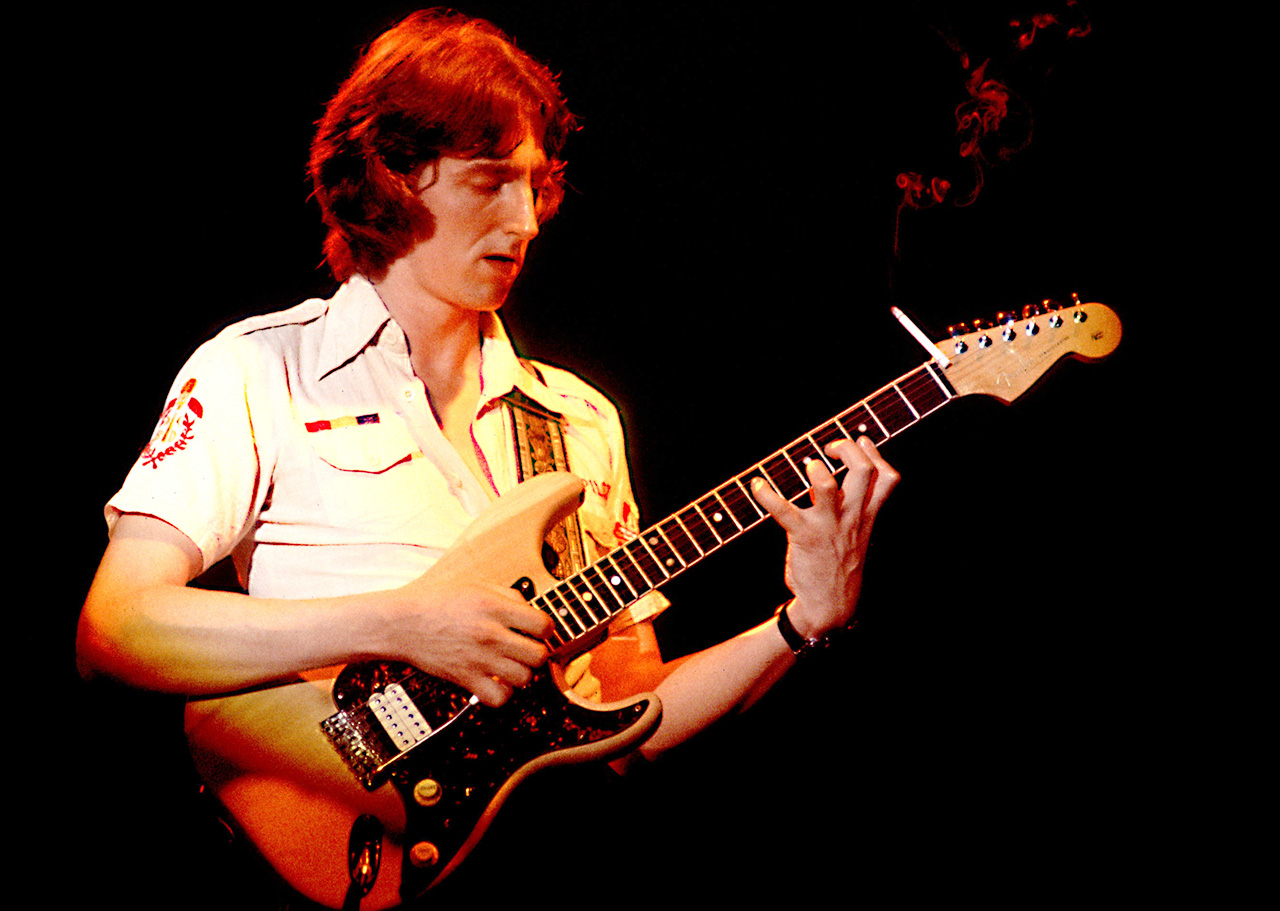
“You can classify guitar players before Allan and after Allan – he’s that important in the history of guitar. But interestingly, I don’t think his mind was very guitarist. Sometimes he sounded like a sax or violin player. His style was so unorthodox, especially when you listen to what he did in Soft Machine or with Tony Williams. Even when he was 20 years old he was innovating.
“He influenced me in a lot of ways, especially when I was starting to experiment with how I looked at the fretboard. Allan helped me see it all differently. I love how he wasn’t thinking about modes; it wasn’t about Dorian or Phrygian and that stuff – he was thinking in terms of three scales. It was the major, melodic minor and harmonic minor, with some harmonic major as well.
I didn’t understand Allan when I first heard his playing; it was too advanced
“He didn’t really care about the modes. He just thought about one root note and a scale that went across the fretboard. I’m a big fan of that mindset. It’s better to think of one scale going across your guitar than seven different ones breaking it up. He inspired me to look at the neck like that.
“Of course, the playing was amazing too. Tokyo Dream is one of his many masterpieces, with all those giant chords. I can’t play some of them because my hands are too small. I didn’t understand Allan when I first heard his playing; it was too advanced. Then around the age of 20, I was like, ‘Woah, I get it!’
“Devil Take The Hindmost has one of the best fusion solos of all-time. In terms of innovating the guitar, Allan is up there with Jimi, Eddie and Django Reinhardt.”
8. Django Reinhardt
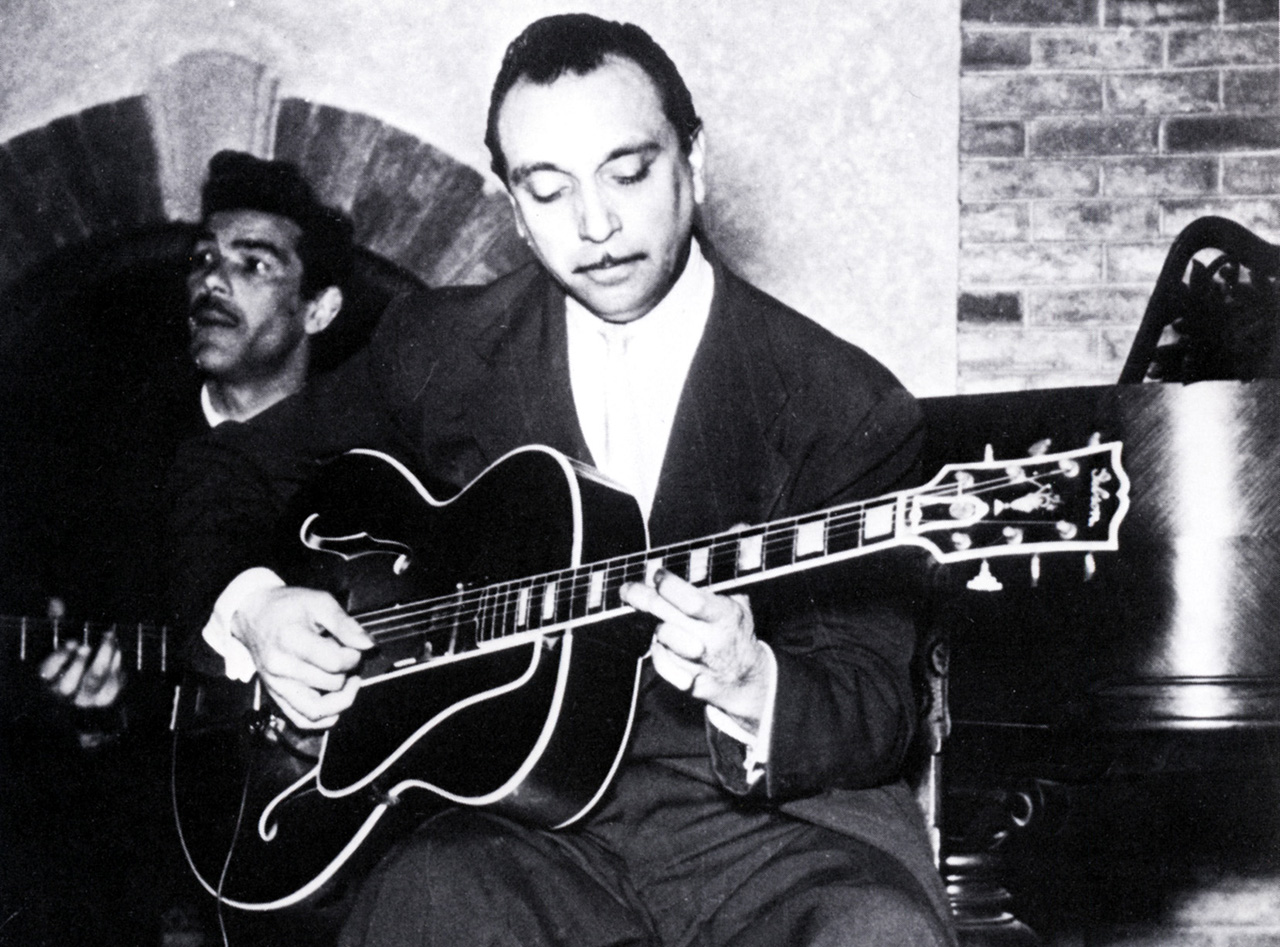
“Speaking of Django, there was a period of time where I really started digging into the world of gypsy jazz. Django taught me a lot. I think he’s one of the best pickers of all time. There’s something magical that happens when he does all the chromatic stuff – even though he’s only using two fingers, it’s so on-point. It almost sounds like MIDI guitar!
“If you imagine that level of technique in the 1940s, it’s incredible. People were looking at him like a god. Learning his music was a technical challenge for me – gypsy jazz arpeggios with fingerstyle is very tricky because you need a lot of volume, which comes from using a pick. And those players often use very thick picks to get that sound. It was difficult for me to achieve that with just fingers on an acoustic.
“Through him I learned a lot about playing through chord changes. His music isn’t that complex harmonically. There aren’t a lot of chords like there are in fusion; instead he’d use a lot of vocabulary over just a few chords, like a II-V-I progression with 10 different possibilities for the V.
“He used so many scales from whole tone to half diminished. Some of it sounds like modern jazz, but he was doing this stuff 80 years ago. Django was ahead of his time. He created a magical sound.”
9. Wes Montgomery
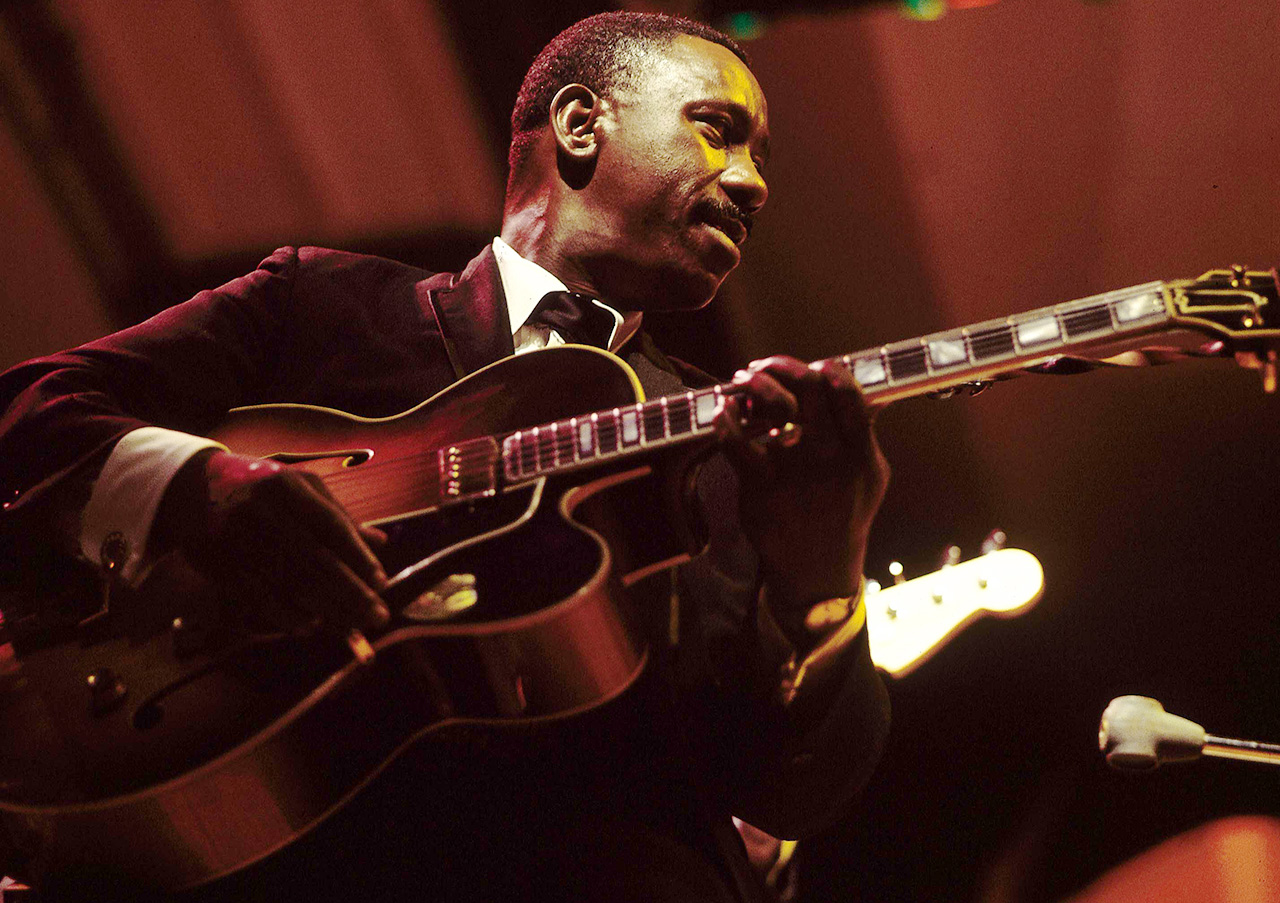
“All the first clean jazz licks I learned came from Wes. What I love about his playing most is that all his solos were improvised, but they sounded like they were preconceived.
“There’s no incredible technique behind his playing, but he had such melodic control and this incredible flow of ideas. I love how he found his sound through his limitations, because he was using just his right hand thumb. Most players wouldn’t be able to do much with just that.
“His rhythmic concepts were amazing – that was one of his greatest strengths. Over the years he’s one of the players I’ve transcribed the most. When you hear me playing clean, I would say 80 percent of the single note lines have come from him.”
10. Pat Metheny
“Pat has influenced me a lot in life – not so much in terms of how I play, but definitely in how I compose. But I love his use of chromatics and his approach to soloing. He tends to be very melodic at first, then right at the end he starts doing all the crazy stuff.
“I feel like there are two characters that coexist in his sound, from the really sweet-sounding ideas to the extremely out-there jazz madness. He’s one of the best single note line improvisers out there and also one of the best composers.
“I remember the first time I heard Last Train Home and Still Life (Talking), which is one of his best albums with the Pat Metheny Group. There are so many tunes which inspired me, like Minuano and First Circle. He’s an incredibly well-rounded player.”
- The Journey is on sale now via Mascot Label Group.
Amit has been writing for titles like Total Guitar, MusicRadar and Guitar World for over a decade and counts Richie Kotzen, Guthrie Govan and Jeff Beck among his primary influences as a guitar player. He's worked for magazines like Kerrang!, Metal Hammer, Classic Rock, Prog, Record Collector, Planet Rock, Rhythm and Bass Player, as well as newspapers like Metro and The Independent, interviewing everyone from Ozzy Osbourne and Lemmy to Slash and Jimmy Page, and once even traded solos with a member of Slayer on a track released internationally. As a session guitarist, he's played alongside members of Judas Priest and Uriah Heep in London ensemble Metalworks, as well as handled lead guitars for legends like Glen Matlock (Sex Pistols, The Faces) and Stu Hamm (Steve Vai, Joe Satriani, G3).




